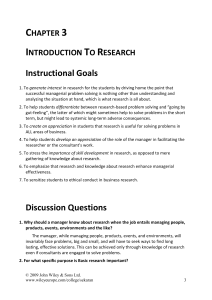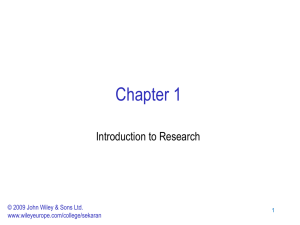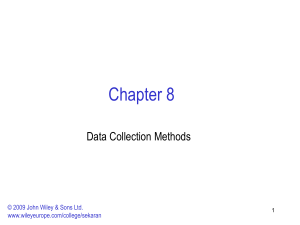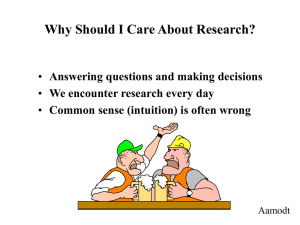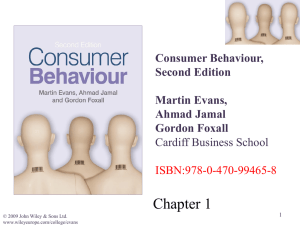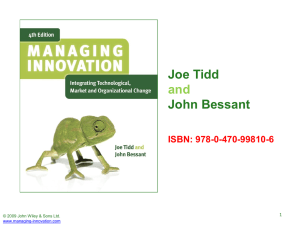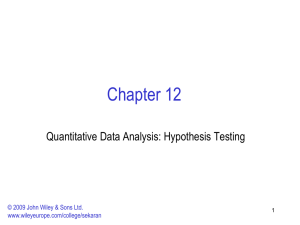Chapter 5
advertisement
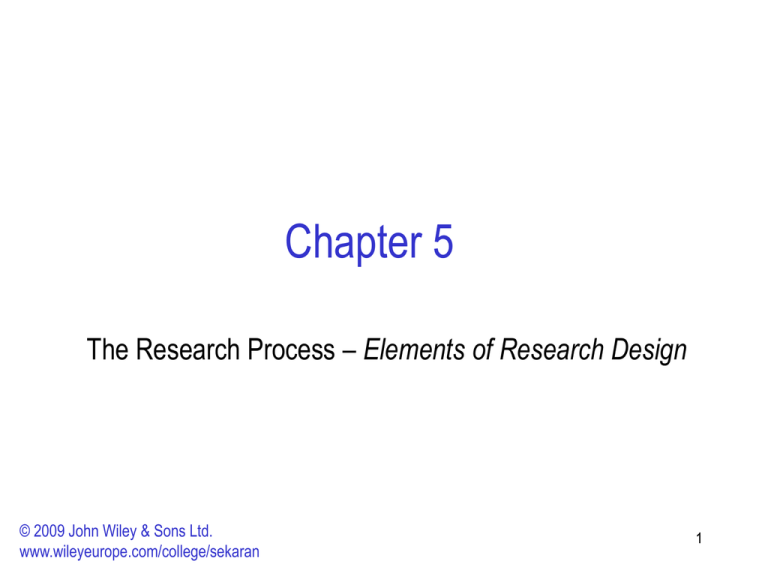
Chapter 5 The Research Process – Elements of Research Design © 2009 John Wiley & Sons Ltd. www.wileyeurope.com/college/sekaran 1 Research Design © 2009 John Wiley & Sons Ltd. www.wileyeurope.com/college/sekaran 2 Purpose of the Study Exploration Description Hypothesis Testing © 2009 John Wiley & Sons Ltd. www.wileyeurope.com/college/sekaran 3 Purpose of the Study Exploratory study: – is undertaken when not much is known about the situation at hand, or no information is available on how similar problems or research issues have been solved in the past. Example: – A service provider wants to know why his customers are switching to other service providers? © 2009 John Wiley & Sons Ltd. www.wileyeurope.com/college/sekaran 4 Purpose of the Study Descriptive study: – is undertaken in order to ascertain and be able to describe the characteristics of the variables of interest in a situation. Example: – A bank manager wants to have a profile of the individuals who have loan payments outstanding for 6 months and more. It would include details of their average age, earnings, nature of occupation, full-time/part-time employment status, and the like. This might help him to elicit further information or decide right away on the types of individuals who should be made ineligible for loans in the future. © 2009 John Wiley & Sons Ltd. www.wileyeurope.com/college/sekaran 5 Purpose of the Study Hypothesis testing: – Studies that engage in hypotheses testing usually explain the nature of certain relationships, or establish the differences among groups or the independence of two or more factors in a situation. Example: – A marketing manager wants to know if the sales of the company will increase if he doubles the advertising dollars. © 2009 John Wiley & Sons Ltd. www.wileyeurope.com/college/sekaran 6 Type of Investigation Causal Study – it is necessary to establish a definitive cause-and-effect relationship. Correlational study – identification of the important factors “associated with” the problem. © 2009 John Wiley & Sons Ltd. www.wileyeurope.com/college/sekaran 7 Study Setting Contrived: artificial setting Non-contrived: the natural environment where work proceeds normally © 2009 John Wiley & Sons Ltd. www.wileyeurope.com/college/sekaran 8 Population to be Studied Unit of analysis: – – – – – Individuals Dyads Groups Organizations Cultures © 2009 John Wiley & Sons Ltd. www.wileyeurope.com/college/sekaran 9 Time Horizon Cross-sectional studies – Snapshot of constructs at a single point in time – Use of representative sample Multiple cross-sectional studies – Constructs measured at multiple points in time – Use of different sample Longitudinal studies – Constructs measured at multiple points in time – Use of same sample = a true panel © 2009 John Wiley & Sons Ltd. www.wileyeurope.com/college/sekaran 10
